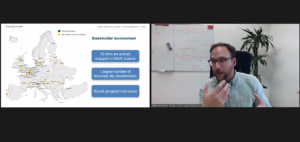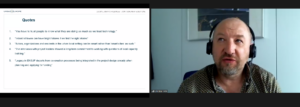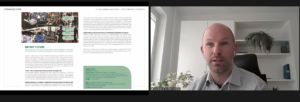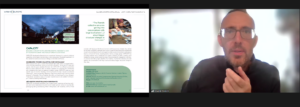Join JPI UE
Faq
FAQ
Please click here for the frequently asked questions we collected.
If you have an additional questions you are welcome to mail us at info@jpi-urbaneurope.eu






In comparison with other Urban Europe calls, projects funded in the ERA-NET Smart Urban Futures, manifests an all-time high i terms of stakeholder involvement. To harvest lessons for the future, Urban Europe commissioned a series of interviews with a handful of the ENSUF projects – to gain a better understanding of the dynamics of urban living labs and to what extent they can lead to long lasting capacity building among researchers and residents.
The webinar gave an opportunity to share and reflect further on some of the findings from these interviews, together with researchers from three of the ENSUF projects. The webinar offered summary insights from the ENSUF synthesis report soon to be published at the Urban Europe website.
Katarina Larsen, that had conducted the interviews, especially mentioned that the researchers had been creative in developing new approaches and hands-on tools on how to engage with residents, rather than writing articles for prestigious magazines. Jonas Bylund, Research- and Innovation officer in JPI Urban Europe, explained that the creative practices developed by the researchers to collaborate with residents in urban living labs are potentially useful for future initiatives related to the New Green Deal and New European Bauhaus.
“Practices developed by the researchers to collaborate with residents in urban living labs are potentially useful for future initiatives related to the New Green Deal and New European Bauhaus. “
All three ENSUF researchers gave examples of how participatory research in Urban Living Labs can be an enlightening experience. ”Stepping out from the role as an outsider offering help and instead engaging with residents over a longer period of time enabled us to reach local knowledges, says Daivd Bole from BRIGHT FUTURE . The project Smart Urban Intermediaries, in turn, brought together local changemakers in vulnerable neighbourhoods, and by travelling together to visit different initiatives across Europe they could get the conversation going and take home learnings. One similar discovery in the CAPA.CITY project was the need to support social learning among the participants – to establish studios for meta-learning.
The programmed context, with parallel local cases in several European countries, is common in all Urban Europe calls and allows for cross-comparisons. The BRIGHT FUTRE project underlined that geography matter; results are place-specific and there is no strict replicability. In Southern/Eastern countries gaining a critical mass to influence policy makers was more efficient than involving policy makers from start, which was successful in the North.
“In Southern/Eastern countries gaining a critical mass to influence policy makers was more efficient than involving policy makers from start, which was successful in the North.”
Lessons from ENSUF is a clear example that continuity and ability to build lasting relationships is a key to success. When it comes to establishing cross European research collaboration, setting up urban living labs to explore sustainable practices together with residents and in local policy making was one way for ENSUF projects to do so.
In several cases ENSUF gave leverage to already on-going local collaborations. When asked to give advice to local policy makers. ENSUF project representatives underlined the need to spend lots of time in local neighbourhoods for a better understanding, but also to ”be strategic, choose your groups and the issues – and build long lasting relationships and the rest will follow”
Extending the instruments for analysis and synthesis is important part of the ENSUF legacy. In the upcoming synthesis report, social network analysis is applied to unveil cross-European collaboration patterns among researchers and visualise the ”strong holds” of ENSUF related research. Data crowding methods has also been applied to measure ENSUF projects’ communication activities, as well as text analysis to understand how ENSUF results are embedded in a wider policy context- and relevant to the global Sustainable Development Goals, Agenda 2030.
Watch the webinar recording
Read more on the ENSUF call page
Register to the newsletter to receive news on the synthesis report